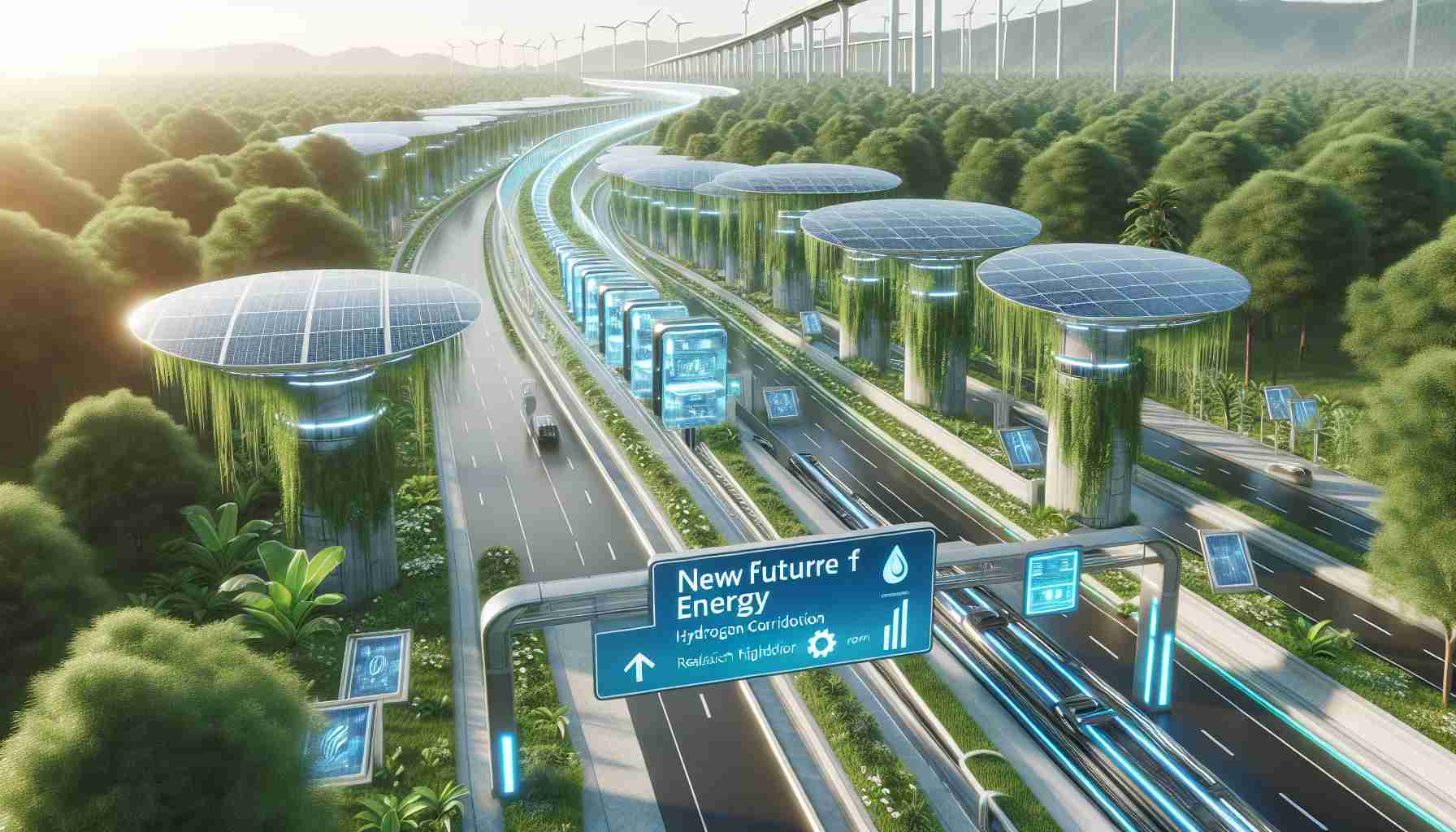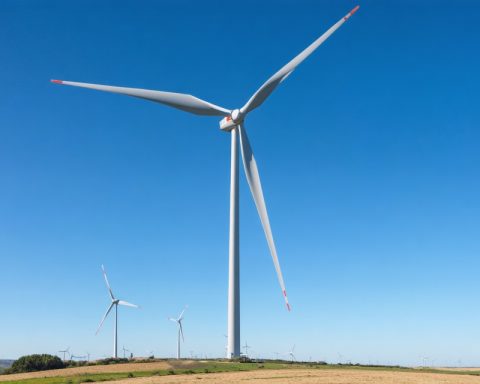The Ukraine-EU Hydrogen Corridor is officially on the map! The Gas Transmission System Operator of Ukraine (GTSOU) has joined forces with several prominent organizations to establish a groundbreaking Memorandum of Understanding aimed at launching this pivotal initiative.
Recent developments highlight a significant collaboration between GTSOU and multiple partners, including Stadtwerke München and Wien Energie, among others. This partnership is set to harness Ukraine’s renewable energy resources, facilitating the transmission of green hydrogen into the European energy framework.
The objective of this ambitious initiative is to enhance renewable energy production within Ukraine and ensure effective transportation through existing pipelines into Slovakia, the Czech Republic, Austria, and Germany, with a focus on operationalizing these routes by 2030. Noteworthy is the intention to repurpose aspects of the current pipeline infrastructure specifically for hydrogen transportation.
Additionally, the memorandum emphasizes the need for cohesive infrastructure investment and regulatory alignment as vital components for the project’s success. Initiated by the Ukraine Green Industrial Recovery Platform and supported by major organizations, this initiative underscores the importance of a collective effort in transitioning to sustainable energy sources.
The corridor not only signifies a commitment to green energy but also reinforces the strategic partnership inked earlier this year between Ukraine’s Prime Minister and the European Commission President. This proves a significant step towards a cleaner, interconnected energy future.
The Broader Implications of the Ukraine-EU Hydrogen Corridor
The launch of the Ukraine-EU Hydrogen Corridor represents a revolutionary advancement in the intersection of energy, economy, and international relations. This initiative is poised to reshape the European energy landscape by leveraging Ukraine’s abundant renewable resources—primarily solar and wind energy—to produce green hydrogen. As European nations strive to meet ambitious climate targets, such initiatives offer a viable pathway to reducing dependency on fossil fuels, particularly from politically unstable regions.
The impact on society and culture extends beyond energy independence to include economic opportunities for Ukraine. By positioning itself as a hydrogen supplier, Ukraine stands to boost its economy significantly. This could lead to job creation in renewable energy sectors, fostering a cultural shift towards sustainability and innovation. Moreover, facilitating access to clean energy can empower local communities, enhancing public health and quality of life across the region.
Environmental implications are equally significant. The shift to hydrogen will contribute to the reduction of greenhouse gas emissions, aligning with global efforts to combat climate change. As the impact of climate change becomes increasingly apparent, future trends are likely to focus more on energy diversification and technological advancements in hydrogen production and storage.
Overall, this corridor signifies not just a technological milestone, but a fundamental transformation with profound long-term significance. By fostering cooperation between nations, it sets a precedent for collaborative action against climate change—promoting unity in an era where global challenges necessitate shared solutions.
Unlocking the Future: The Ukraine-EU Hydrogen Corridor is Revolutionizing Renewable Energy!
Overview of the Ukraine-EU Hydrogen Corridor
The Ukraine-EU Hydrogen Corridor is a groundbreaking initiative that aims to strengthen energy ties between Ukraine and the European Union by capitalizing on Ukraine’s vast renewable energy resources. This ambitious plan, spearheaded by the Gas Transmission System Operator of Ukraine (GTSOU), involves a strategic collaboration with key partners such as Stadtwerke München and Wien Energie. Together, they are set to harness green hydrogen production and create an effective transmission network into the heart of Europe.
Features of the Initiative
1. Green Hydrogen Production: The corridor is designed to leverage Ukraine’s renewable energy potential, particularly through wind and solar power, to produce green hydrogen, a clean alternative to fossil fuels.
2. Repurposing Infrastructure: A significant aspect of the initiative involves the innovative repurposing of existing gas pipelines for hydrogen transportation. This not only promotes cost-effectiveness but also maximizes the use of current infrastructure.
3. Geographic Focus: The project targets key European markets, enabling the transport of hydrogen into Slovakia, the Czech Republic, Austria, and Germany. Achieving operational capabilities by 2030 is a crucial timeline for project stakeholders.
4. Regulatory Cohesion: The memorandum highlights the importance of aligning regulatory frameworks across countries to ensure seamless operations and investments in the necessary infrastructure.
Use Cases and Market Demand
As Europe intensifies efforts to reach climate neutrality, the demand for hydrogen as a clean energy carrier is growing. This corridor presents various use cases, including:
– Industrial Applications: Hydrogen can be used in industries such as steel production, refining, and chemical manufacturing as a substitute for coal and natural gas.
– Transportation: Hydrogen fuel cells can revolutionize public and private transportation systems through cleaner fuel options.
– Energy Storage: Green hydrogen offers a solution for energy storage, balancing out fluctuations from intermittent renewable energy sources.
Pros and Cons of the Hydrogen Corridor
Pros:
– Promotes sustainable energy practices among participating nations.
– Enhances energy security and diversification of energy supplies for Europe.
– Facilitates economic growth and job creation within the renewable energy sector in Ukraine.
Cons:
– Initial investments for infrastructure repurposing and new technology could be substantial.
– Hydrogen transportation safety and regulatory concerns need to be addressed to gain public acceptance.
Pricing and Economic Implications
While precise pricing structures are still under discussion, the overall goal is to make green hydrogen economically viable by leveraging existing infrastructure and creating competitive markets within Europe. Successful establishment of the corridor could lead to decreased energy costs in the long term and the formation of a new energy market.
Insights and Trends in Renewable Energy
The Ukraine-EU Hydrogen Corridor aligns with a broader trend towards decarbonization and establishing integrated energy networks throughout Europe. With increasing investments in green technologies, fuel cells, and hydrogen production methods, this initiative is positioned to facilitate a significant shift toward sustainable energy utilization across the continent.
Security and Sustainability Aspects
The establishment of the corridor represents a strategic move not only for energy security but also for sustainable development. By investing in renewable technologies and infrastructure improvements, stakeholders are committing to both environmental sustainability and energy independence.
Predictions for Future Development
As the corridor moves towards operational status by 2030, it is expected to play a pivotal role in Europe’s energy transition strategy. Further advancements in hydrogen technology and increased cooperation between Ukraine and EU states may lead to a robust green hydrogen market, enhancing the stability of energy supplies and supporting climate goals across Europe.
For more information on energy initiatives and the future of renewable energy, visit Energy.gov.

















